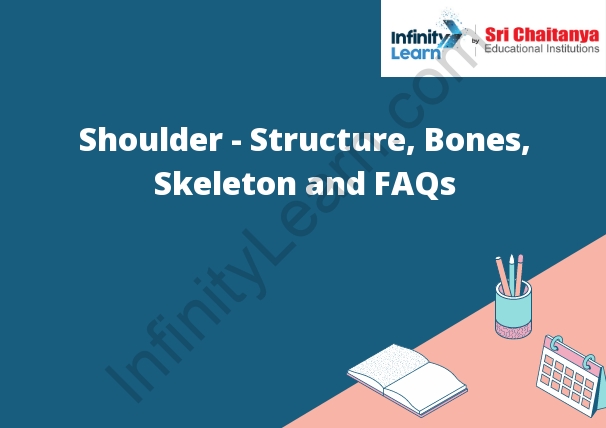Table of Contents
Human Shoulder Anatomy
Shoulder – Structure:
- The shoulder is a ball-and-socket joint that connects the upper arm bone (humerus) to the shoulder blade (scapula). The shoulder socket is shallow, which makes the shoulder joint very flexible. The shoulder joint is also stabilized by a series of ligaments and muscles.
- The shoulder muscles are divided into two groups: the rotator cuff muscles and the deltoid muscles. The rotator cuff muscles are a group of four muscles that surround the shoulder joint and help to lift the arm. The deltoid muscles are a large muscle on the upper arm that helps to lift the arm and rotate it outwards.
- The shoulder is susceptible to a number of injuries, including rotator cuff tears, dislocated shoulders, and shoulder impingement syndrome.

Shoulder Bone Structure
The shoulder is a ball and socket joint. The ball is the top of the upper arm bone (humerus) and the socket is part of the shoulder blade (scapula). The socket is deep and round. The ball fits into the socket like a golf ball in a tee. The joint is held together by ligaments and muscles.
What is Shoulder?
The shoulder is a ball-and-socket joint that allows the arm to move in many directions. The shoulder is made up of three bones: the humerus, the scapula, and the clavicle. The shoulder is held together by muscles, tendons, and ligaments.
Shoulder Skeleton
The shoulder skeleton includes the clavicle (collarbone), scapula (shoulder blade), and humerus (upper arm bone). The clavicle is a thin, curved bone that connects the shoulder blade to the upper arm bone. The scapula is a flat, triangular bone that forms the back of the shoulder. The humerus is a long, cylindrical bone that forms the upper arm.
Human Shoulder
Joint
- The shoulder joint is a ball and socket joint. The ball is the top of the humerus (upper arm bone) and the socket is part of the scapula (shoulder blade). The joint is held together by muscles, tendons, and ligaments.
- The shoulder joint is a very mobile joint that allows a wide range of motion. It can rotate, flex, and extend.
Human Shoulder Bones
The human shoulder is made up of three bones: the clavicle (collarbone), the scapula (shoulder blade), and the humerus (upper arm bone). The clavicle is a thin, curved bone that connects the shoulder to the breastbone (sternum). The scapula is a large, flat bone that forms the back of the shoulder. The humerus is a long, cylindrical bone that forms the upper arm. The shoulder joint is a ball-and-socket joint. The ball is the head of the humerus, and the socket is part of the scapula. The shoulder joint is held together by ligaments (strong tissues that connect bones) and muscles.
Anterior View of Right Shoulder
- The anterior view of the right shoulder shows the muscles and bones of the shoulder joint. The shoulder joint is a ball and socket joint that allows the arm to move in a variety of directions. The shoulder joint is composed of the humerus (upper arm bone), the scapula (shoulder blade), and the clavicle (collarbone).
- The muscles of the shoulder joint are the rotator cuff muscles, the deltoid muscle, and the pectoralis muscle. The rotator cuff muscles are a group of four muscles that attach to the humerus and the scapula. These muscles are responsible for rotating the arm. The deltoid muscle is a large muscle that covers the shoulder joint. The pectoralis muscle is a large muscle that covers the front of the chest.
- The bones of the shoulder joint are the humerus, the scapula, and the clavicle. The humerus is the bone of the upper arm. The scapula is the bone of the shoulder blade. The clavicle is the bone of the collarbone.









